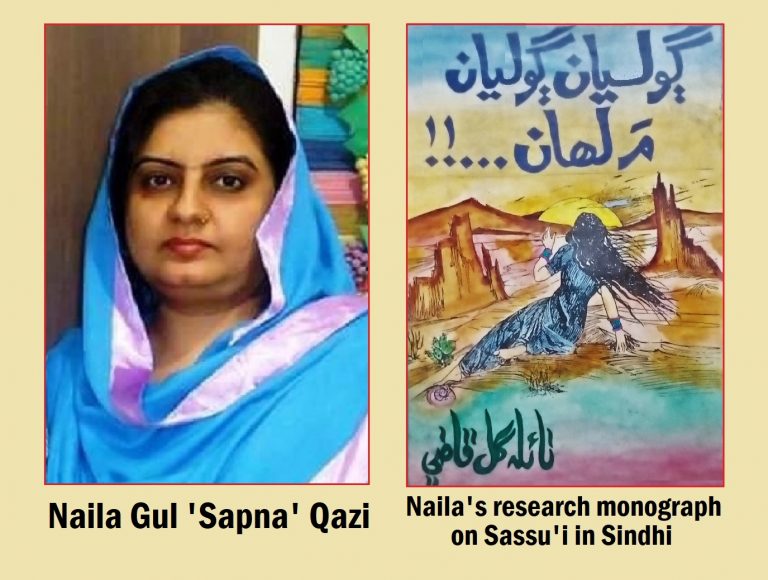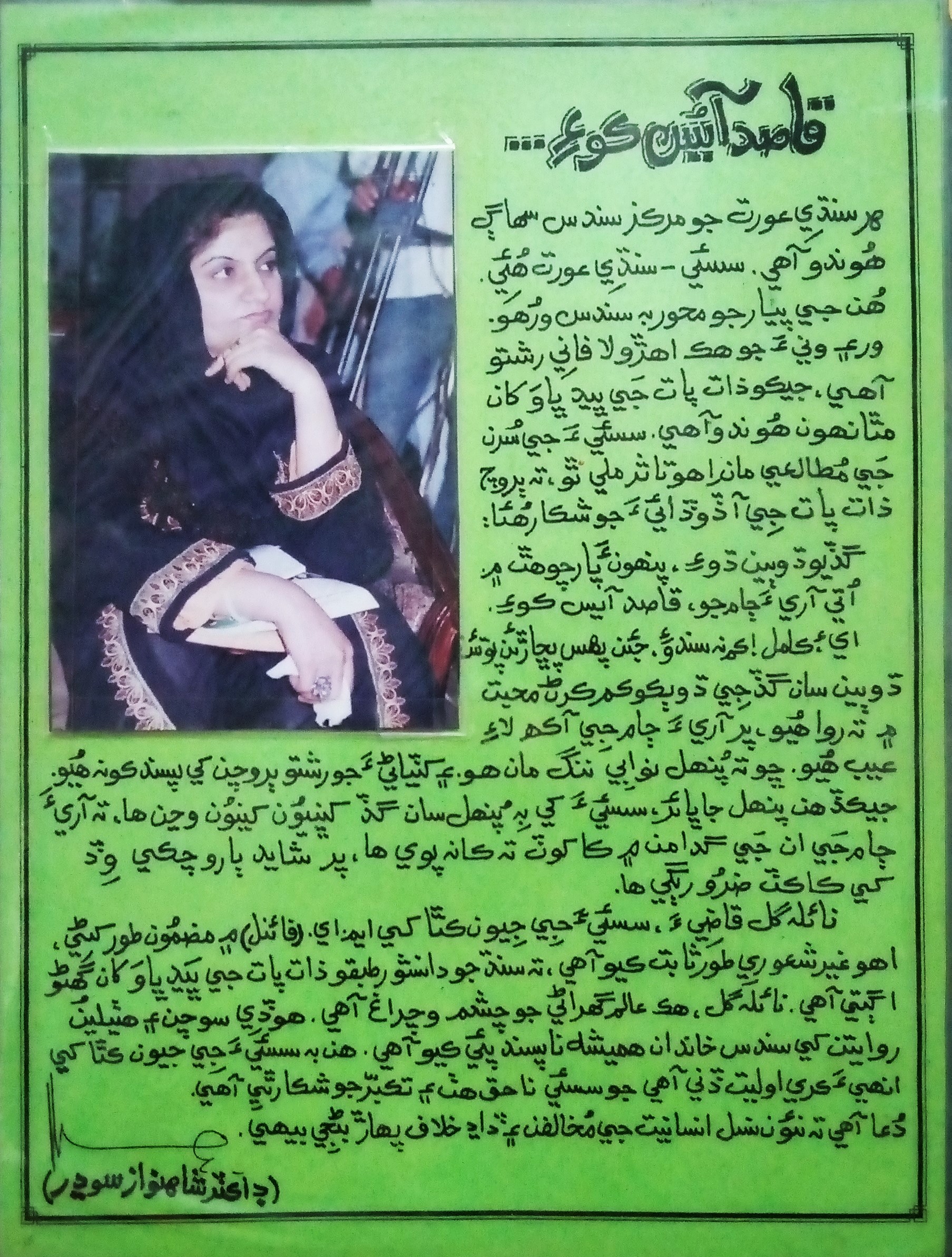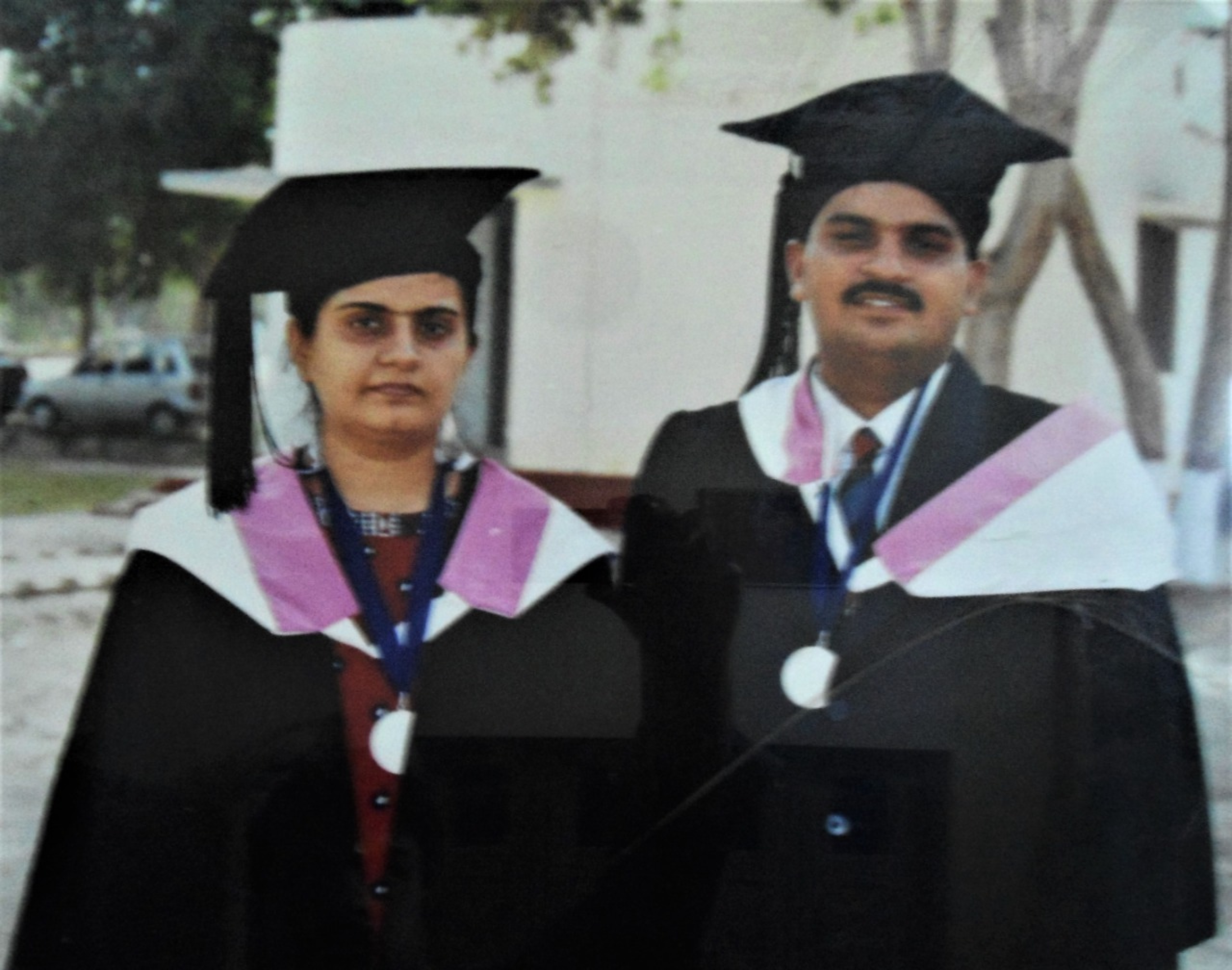
December 27 marks the 4th demise anniversary of Naila Gul “Sapna” Qazi, known Sindhi Poet, Researcher, Calligrapher, Compere, Editor and Educationist
Book review by Yasir Qazi
Every year, January 27 brings with it the sad memory of late Prof Naila Gul ‘Sapna’ Qazi, Sindh’s young poet, prose writer, educator, calligrapher, teacher, and compere. The eldest child and only daughter of renowned Sindhi poet Maqsood Gul, Naila Gul (pseudonym ‘Sapna’) was born on December 8, 1977, and left four years ago on January 27, 2019, at the age of just 41 years. Sapna’s recognition in the field of literature was poetry, but in the prose arena, her pen continued to express its essence more meritoriously than poetry. From essays to research papers, from columns to children’s stories, the beauty and comprehensiveness of her writings had been the perfect source of communication for her readers. During the year 2000, while doing Masters’ in Sindhi literature at Shah Abdul Latif University Khairpur, she wrote a research monograph on the life and role of Sassui, as narrated in the various traditions and as mentioned in the poetry of Shah Abdul Latif Bhittai, the greatest poet of Sindh, as well as other classical and modern poets of Sindhi literature, in Sindhi Department of the University. She completed this research work under the patronage of Malik Nadeem, a renowned scholar and outstanding poet of Sindhi abstract poetry, in which she narrated Sassui’s life story, and poetic aspects of her struggle, as quoted in the oral as well as written traditions. The quality of this research is never less than M. Phil dissertation, without exaggeration, in the completion of which besides Malik Razzaq Nadeem, Dr. Shahnawaz Sodhar, an eminent scholar and researcher also played his role as Naila’s co-guide. As a gifted student, Naila Gul ‘Sapna’ Qazi secured First Class – First Position in her Master’s exams. Certainly this success includes her hard work as well as her research and writing skills in this thesis.
Today, on the 4th demise anniversary of Prof Naila Gul ‘Sapna’ Qazi, paying her homage, let us have a brief look at this research paper.
 The title of this paper, written in Sindhi, has been adopted by Naila, with a minor modification, in half of a line of a poem by Shah Abdul Latif Bhittai about Sassui, which is “Goliyan Goliyan Ma Lahaan” (in Sindhi). (Shah Latif’s words are: “Doriyaan Doriyaan Ma Lahan”) Both mean: “I should remain in a continuous search, but I wish! I may never find you.”
The title of this paper, written in Sindhi, has been adopted by Naila, with a minor modification, in half of a line of a poem by Shah Abdul Latif Bhittai about Sassui, which is “Goliyan Goliyan Ma Lahaan” (in Sindhi). (Shah Latif’s words are: “Doriyaan Doriyaan Ma Lahan”) Both mean: “I should remain in a continuous search, but I wish! I may never find you.”
I think the name of the theses written about Shah Latif’s exemplary character, the symbol of bravery, determination and fearlessness (Sassu’i) could not have been better than this.
Sapna Gul has dedicated this research paper to her father, Maqsood Gul. She writes on the dedication page:
“Dedicated to his name, who by teaching the closeness of the books and the use of the pen, made it possible to make me walk step by step in the world of literary creativity. Who is not only my father but also my literary mentor, he is none other than Maqsood Gul.”
Late Dr. Shahnawaz Sodhar, a well-known scholar, intellectual and researcher of Sindh (who was Sapna’s co-supervisor in this research), writes on the back cover of this monograph regarding the author:
“Naila Gul Qazi has written about the life of Sassui. By choosing this topic for her research in the M.A. final, she has subconsciously proved that Sindh’s intelligentsia has transcended the caste divide. Naila Gul is the proud beacon of a scholarly family. Arrogant and hateful thoughts and traditions have always been disliked and rejected by her family. That is why she has given priority to Sassui’s life because Sassui was also the target of unnecessary pride and arrogance. We pray that the new generation may stand as a mountain against the enemies of humanity and oppression.”
Naila has divided this research into 11 broad chapters and titled the list “Garland of Pearls”.
These chapters are as follows:
1 – Historical background of Bhanbhore city (where Sassui lived her childhood
2 – Birth and upbringing of Sassui
- a) Who was Sassui?
- b) The birth of Sassui
- c) Sassui’s destiny
- d) Nurturing of Sassui
- e) Sassui’s youth
3 – Sassui’s love relationship with Punhoon
4 – Sassui’s apparent negligence and its consequences
5 – Sassui, the immortal character of Shah Abdul Latif Bhatai (His selected verses, mentioning Sassui from ‘Shah Jo Risalo’)
6 – The message of Shah Abdul Latif Bhitai, in Sassui’s perspective – the ‘Surs’ (chapters) consisting of the mention of Sassui, its real message and purpose hidden in the verses.
7 – Sassui, as mentioned by other (classical and modern) poets of the land.
8 – Few differences found regarding the events of Sassui’s story
9 – Sassui, as the author (Naila Gul Qazi) sees her.
10 – Tomb (twin grave) of Sassui and Punhoon in Baluchistan
11 – Bibliography
Before these chapters, the author has also added her own text as foreword.
In the ninth chapter of this 98-page book, “Sassui, in the eyes of the author”, Naila Gul has mentioned in detail all those motivations, due to which she chose this topic as the title of her master’s research paper. She writes:

“Sassui is a woman and Shah Abdul Latif Bhitai has elaborated Sassui’s exceptional role and importance in his poetry. Out of all the romantic stories, I have read or heard to date, the story of Sassui and Punhoon has had the most impact on me from the very beginning. In particular, its climax is very impressive and inspiring. Apart from this, among all the mentioned female characters of Shah Latif, no one has suffered as much as Sassui. It seems like Sassui is another name for sadness, pain, bitterness, trauma and difficulties.”
Sassui, although is a ‘folk character’, but by deriving it from the words of Shah Latif Bhitai as well as other classical and modern poets, not only in the shape of the words, but from a research point of view, conveying it to the readers according to the principles of research, is certainly a scholarly research work by Prof Naila Gul Sapna Qazi, which will prove to be a source of inspiration for those who aspire to do further research and this work will keep Naila Gul alive in the world of literature and research for a long time.
◙
 The reviewer is a freelance radio and TV broadcast and print journalist, poet, prose-writer, researcher, columnist, blogger, translator, Media Expert, and author of 12 books in Sindhi. He writes regularly for esteemed English, Urdu and Sindhi papers and websites. He can be reached at djyasirqazi@yahoo.com
The reviewer is a freelance radio and TV broadcast and print journalist, poet, prose-writer, researcher, columnist, blogger, translator, Media Expert, and author of 12 books in Sindhi. He writes regularly for esteemed English, Urdu and Sindhi papers and websites. He can be reached at djyasirqazi@yahoo.com